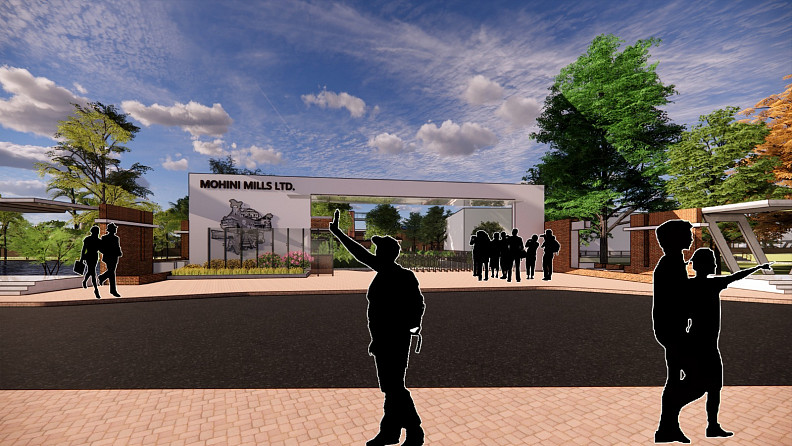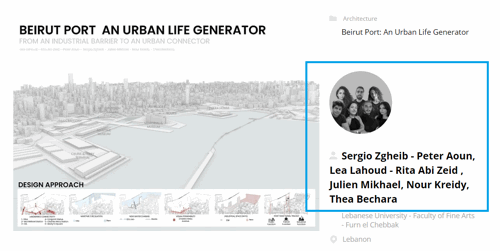Abandoned to Avant-Garde: Mohini Mill Revitalized

Project idea
The Mohini Mill, established in 1908, was the largest textile industrial park in India, producing high-quality fabrics. It was founded through the efforts of Mohini Mohon Chakraborty, poet Rabindranath Tagore, Jogot Kishore Chowdhury, and Chomon Lal on 100 acre of land. Nationalized by Bangabandhu Sheikh Mujibur Rahman in 1972 for regional economic freedom, it operated successfully until 1982. Corruption and conspiracies led to its closure on February 5, 1982, affecting 3,000 workers. Attempts to reopen succeeded temporarily under Prime Minister Sheikh Hasina's order in 2009, but persistent issues led to its final closure and sale to the private sector in April 2011. The plant is now closed and decommissioned.
Area: 19.79 Acres.
Client: Ministry of Textiles & Jute, Bangladesh.
Finance By: Kushtia Municipality & Bangladesh Government.
Vision: My vision is to transform the abandoned Mohini Mill into a vibrant hub of culture and innovation that celebrates its rich industrial heritage while fostering creativity, community engagement and economic growth. But one can’t deny the historical significance of Mohini Mill. Among them contribution towards the Swadesi movement was a remarkable one. Through adaptive reuse, I also aim to preserve the factory’s historical significance, support local artisans and emerging artists, and create a vibrant space for cultural exchange, education and sustainable development.
Project description
This thesis project, titled “Abandoned to Avant-Garde: Mohini Mill Revitalized,” focuses on the transformation of an abandoned industrial site into a dynamic cultural and community hub. Located in a historically significant area, the Mohini Mill holds architectural, social, and economic potential that has long been neglected. The project aims to preserve the mill’s industrial heritage while introducing innovative spatial interventions that promote adaptive reuse, sustainability, and community inclusivity.
Technical information
Project Title: "Abandoned to Avant-Garde: Mohini Mill Revitalized"
Project Type: Adaptive Reuse, Urban Regeneration
Site Area: 19.79 Acres
Location: Mill Para, Kushtia, Khulna, Bangladesh
Existing Structure: Abandoned textile mill with brick masonry structures, steel trusses, and industrial-era architectural features
Areas of Research:
Adaptive reuse of abandoned textile mills is an exciting topic to work that involves repurposing historic industrial buildings for new uses. This field intersects with architecture, urban planning, environmental sustainability and social development. To enhance preservation practice of industrial heritage buildings, this thesis attempts to investigate and to present applicable patterns of reuse of old factory buildings. With the intention to return the former architectural glory and to activate new function, it has been necessary to implement set of urban architectural intervention in accordance with the current legislation in the field of protection of cultural heritage, includes:
Historical Preservation:
Documenting and preserving the historical and architectural significance of weaving mills.
Adaptive Design Strategies:
Exploring innovative design approaches to transform industrial spaces into functional areas such as residential lofts, commercial spaces, cultural centres, or educational facilities.
Material Reuse:
Using reclaimed materials from the original structure to reduce waste and preserve historical character.
Community Development:
Assessing the social impact of repurposing abandoned mills on local communities, including job creation, housing opportunities, and cultural enrichment.
"In the transformation of Mohini Mill, adaptive reuse isn’t just a technique—it’s a tribute"
The project consciously retains and reinterprets existing materials like brick walls, rusted steel beams, and reclaimed timber from the original mill structure.
Instead of demolishing the old, I’ve let the materials speak—restoring textures, preserving scars, and embedding memory within the new architecture.
These elements are integrated into modern forms—exposed brick feature walls, steel-frame partitions, and upcycled wood for furniture and interior finishes.
By doing so, the design balances sustainability and storytelling, breathing new life into the old skeleton without erasing its soul.
While preserving much of the existing structure was central to the design, some parts of the mill were beyond repair. These portions had to be dismantled with care. But in a project rooted in memory and sustainability, even demolition was treated not as destruction, but as transformation. The materials left behind weren’t waste—they were raw potential.
Giving New Purpose to the Discarded
In the revitalization of Mohini Mill, selective demolition was necessary to open spaces and ensure structural safety. But instead of discarding the materials, I saw them as opportunities.
Bricks recovered from broken walls were cleaned and reused for landscape edging and low retaining walls.
Old iron window grills were repurposed as decorative screens and railing details.
Timber from collapsed roofs found new life as seating, display units, and pergola structures in outdoor courtyards.
Even broken concrete pieces were used creatively in hardscaping and filler materials.
This approach not only reduces construction waste but also ensures that every fragment of the old mill continues to be part of its new story.









